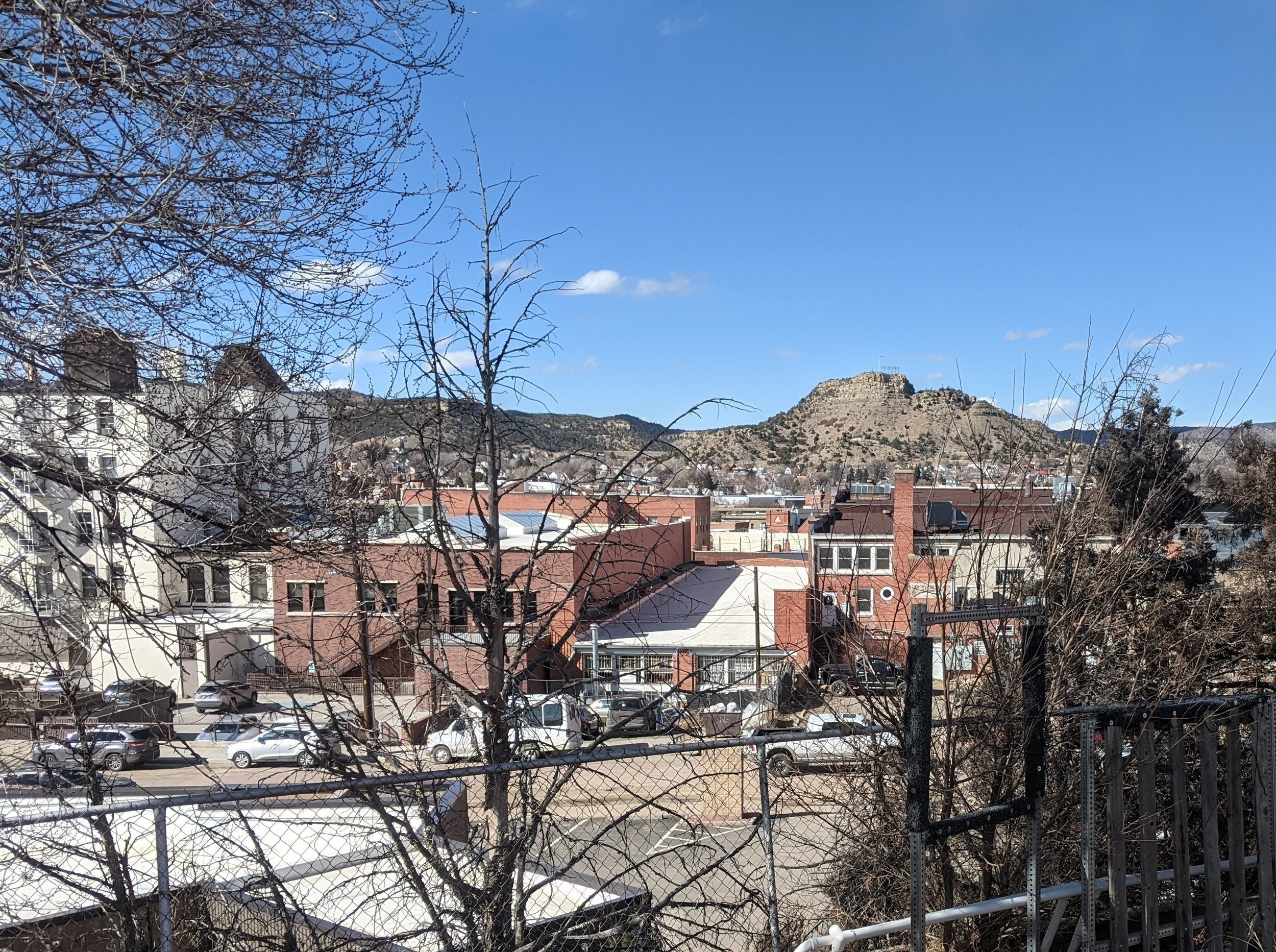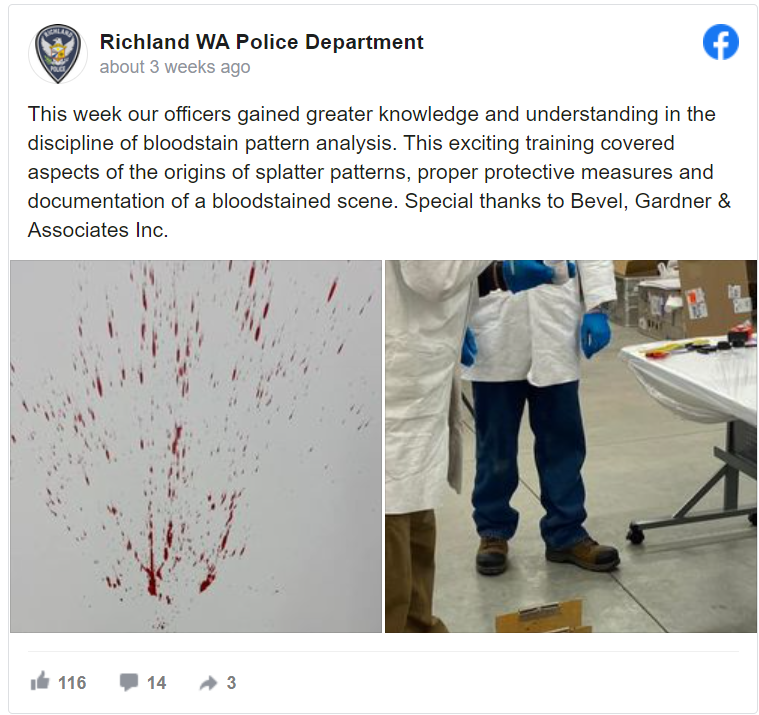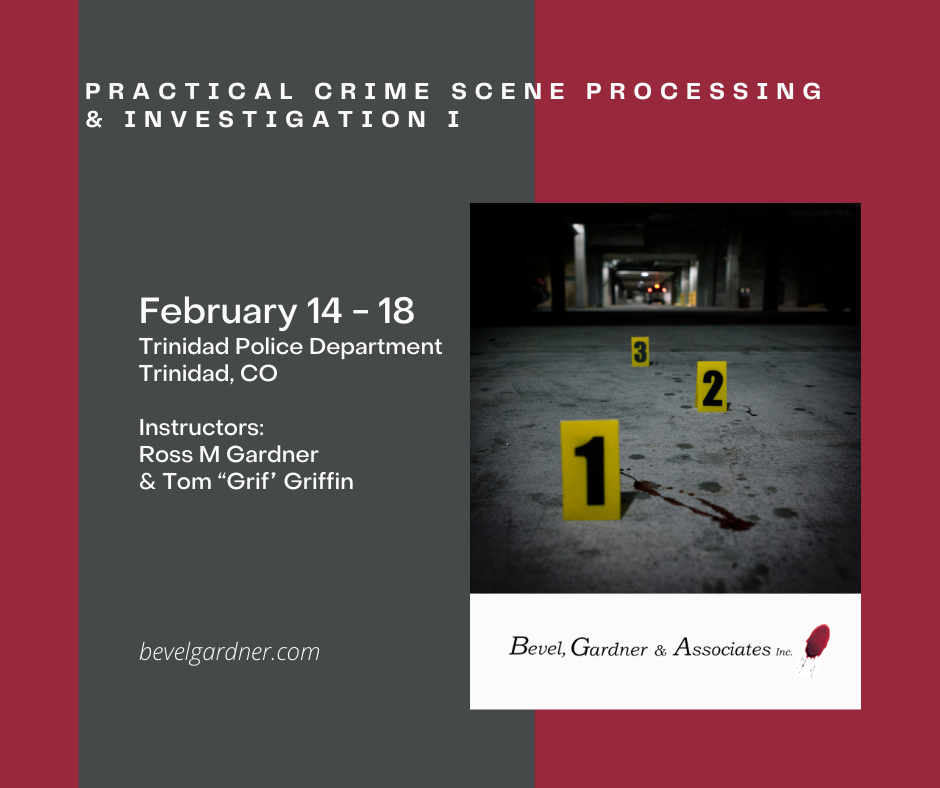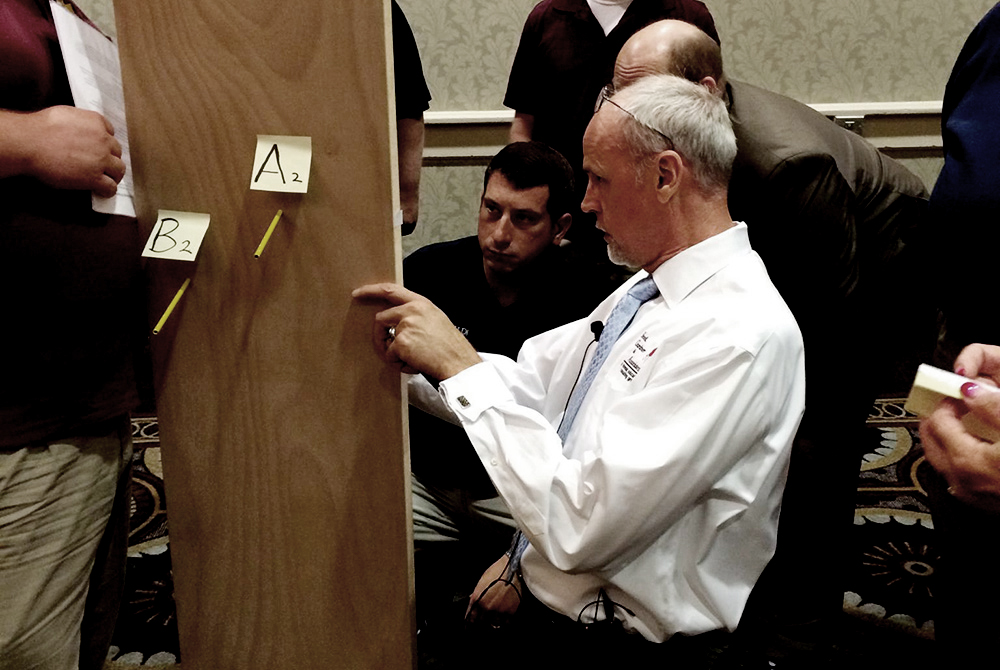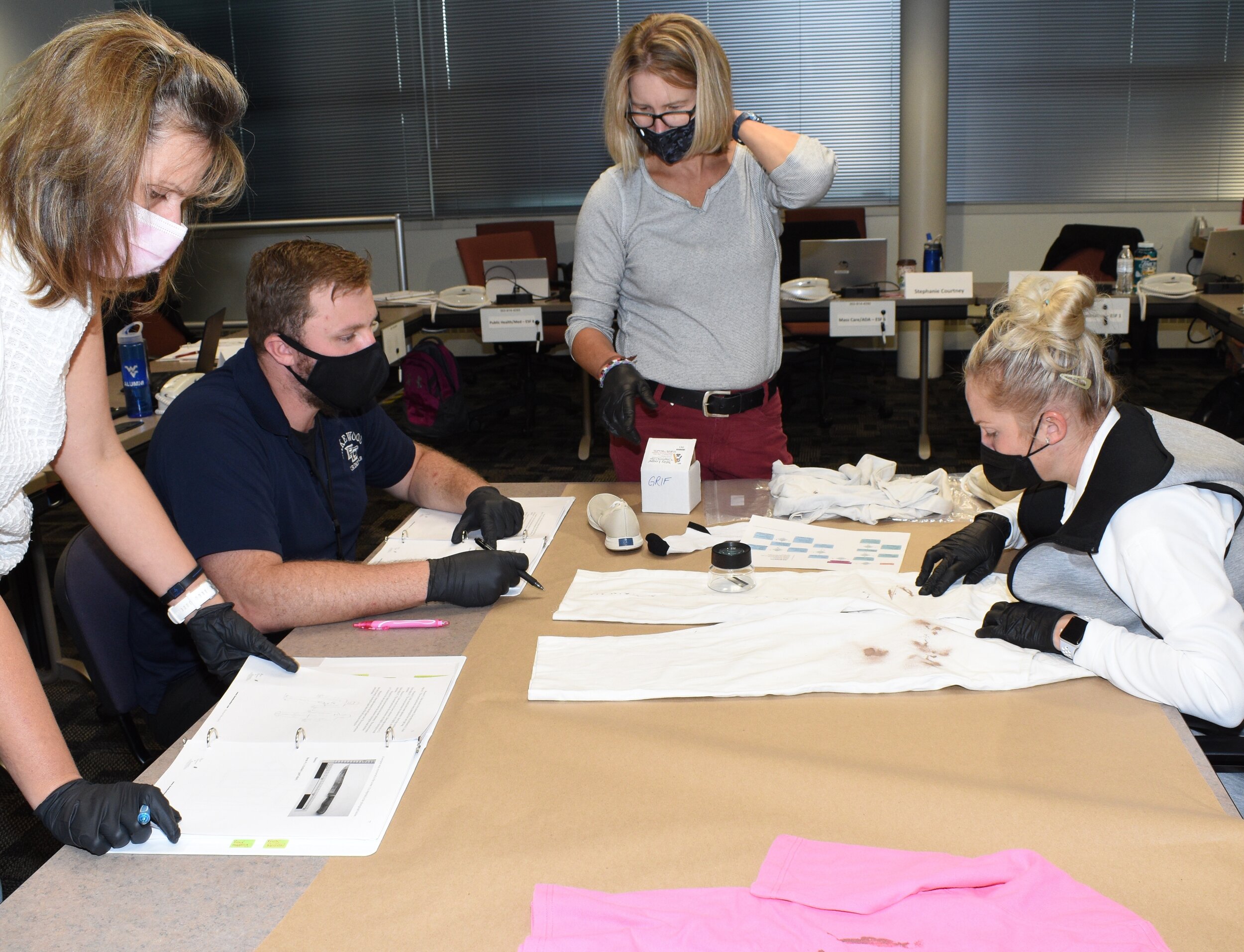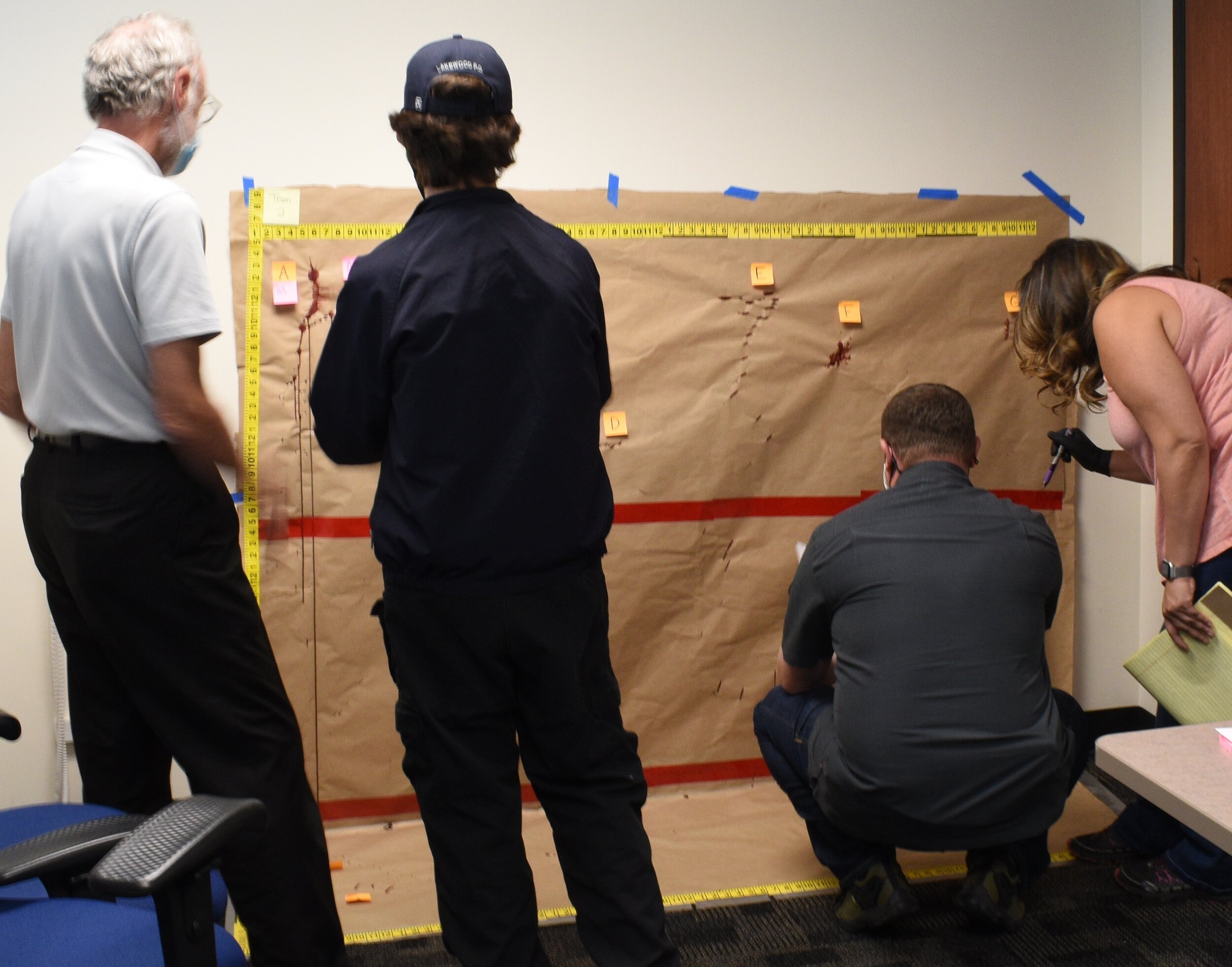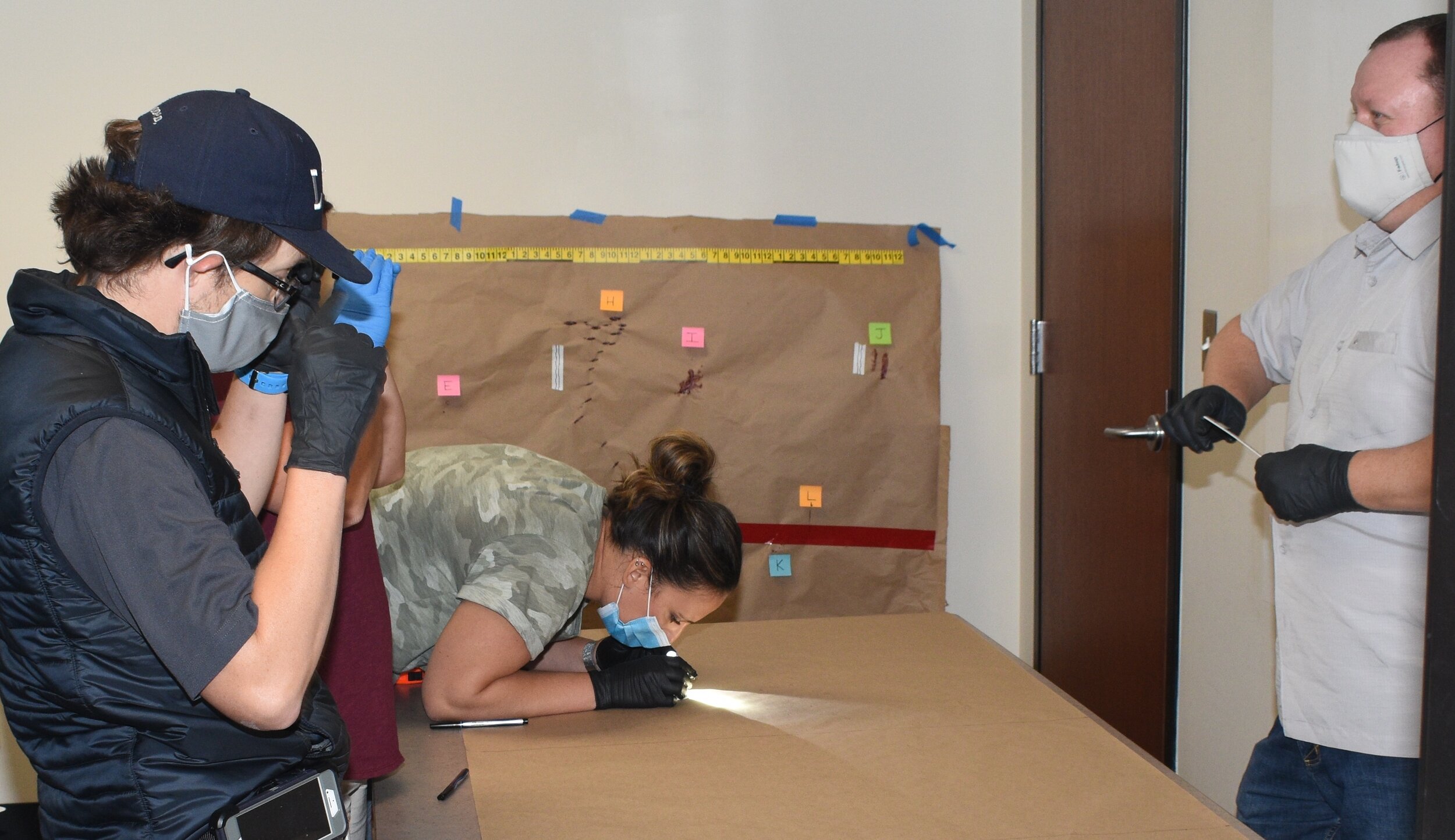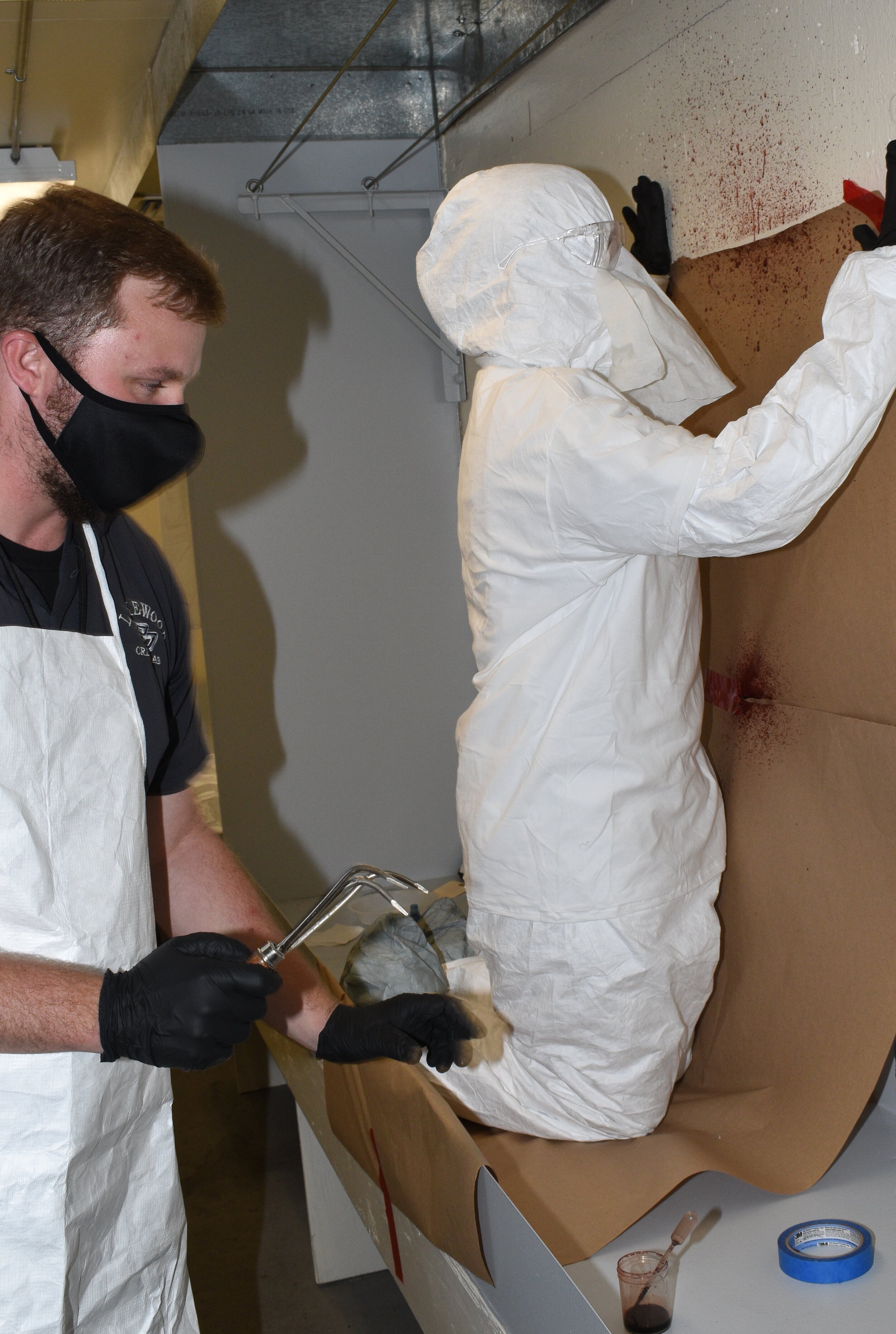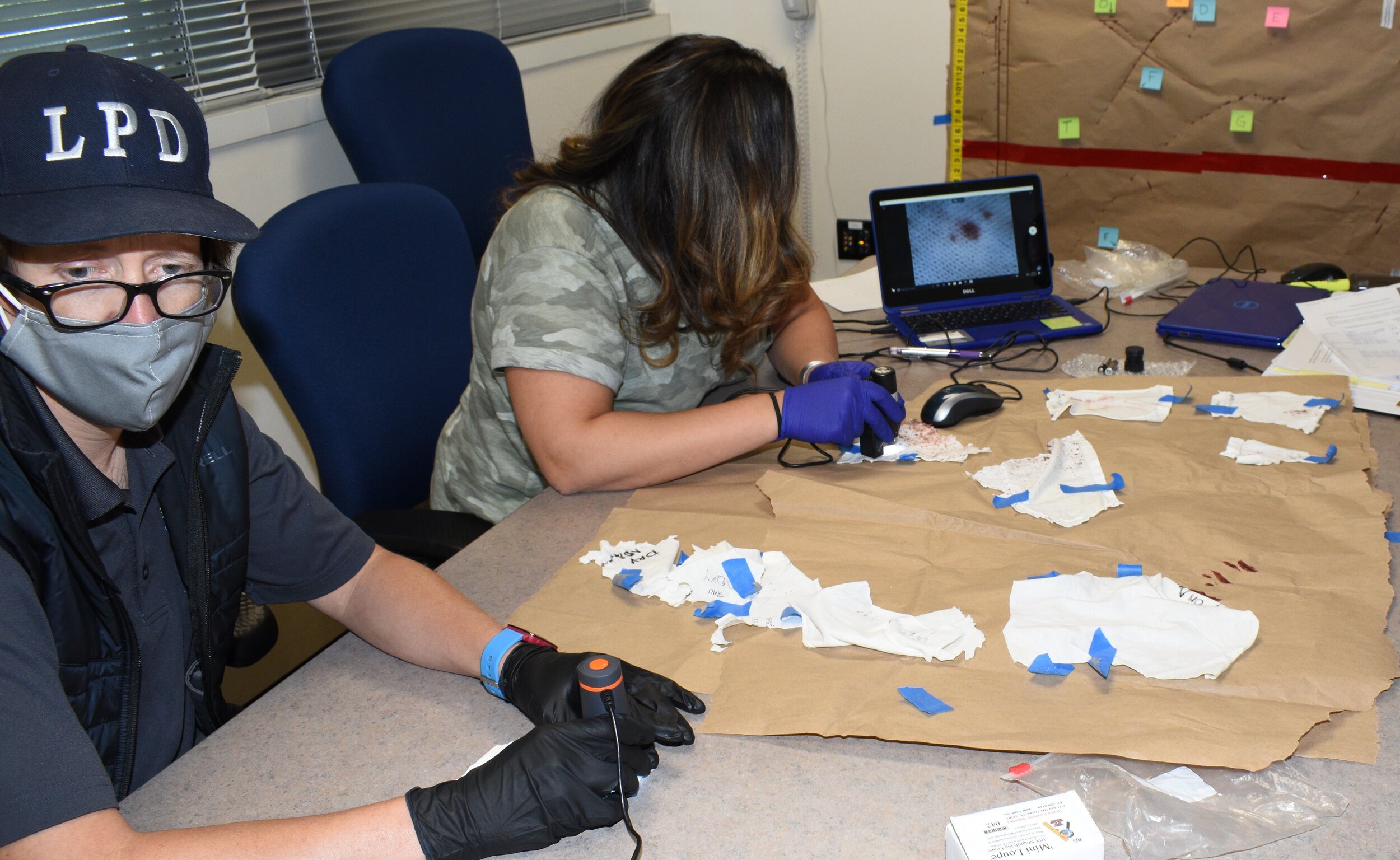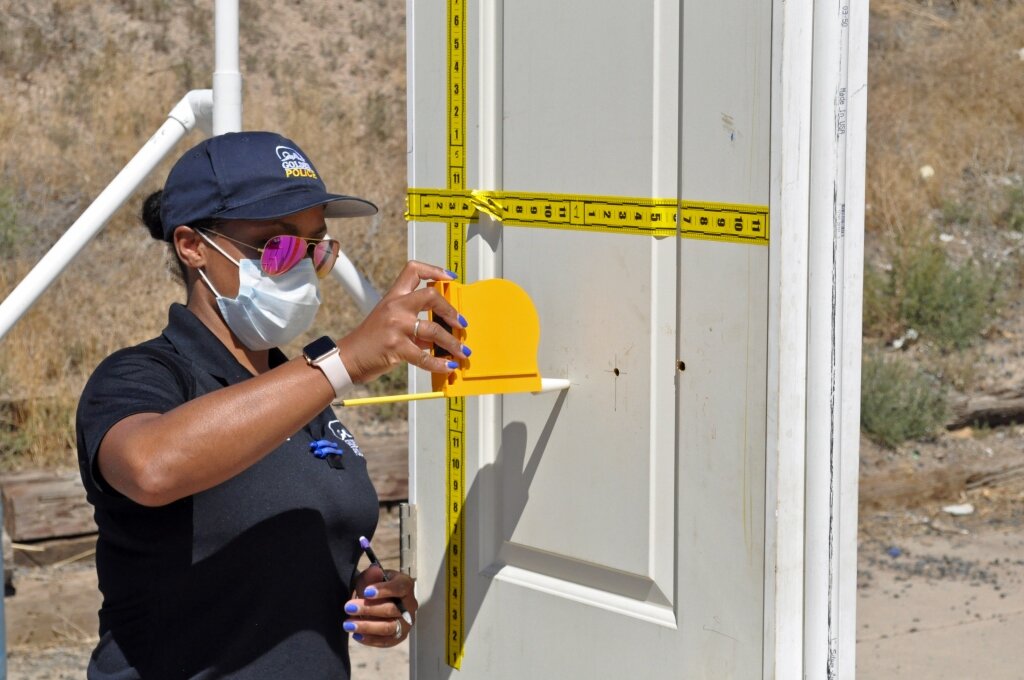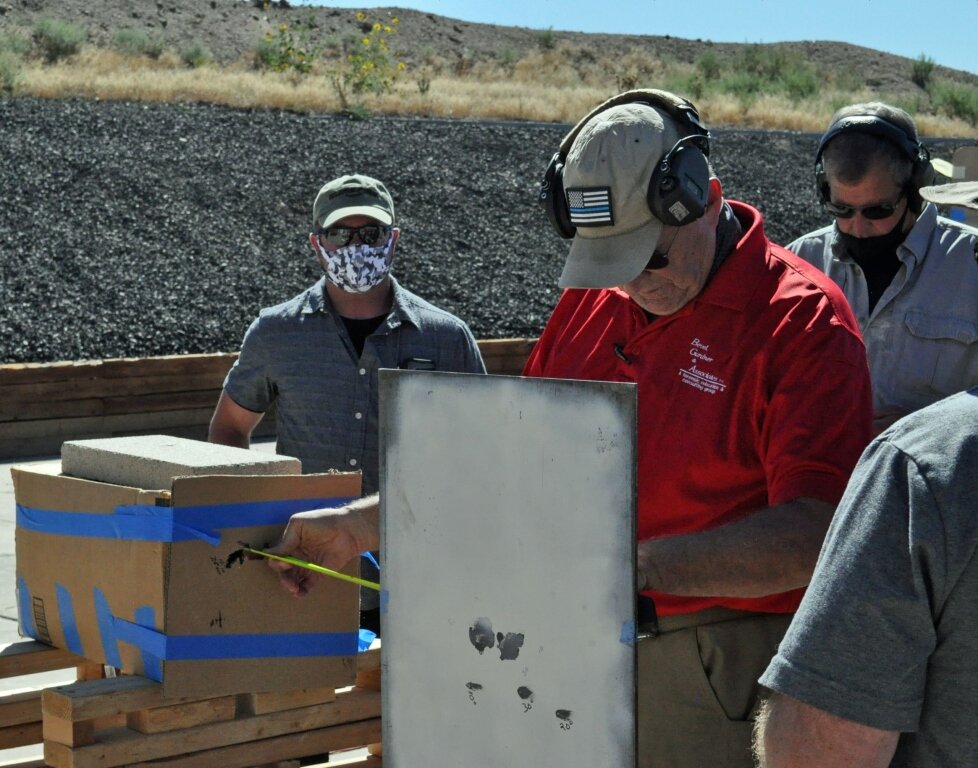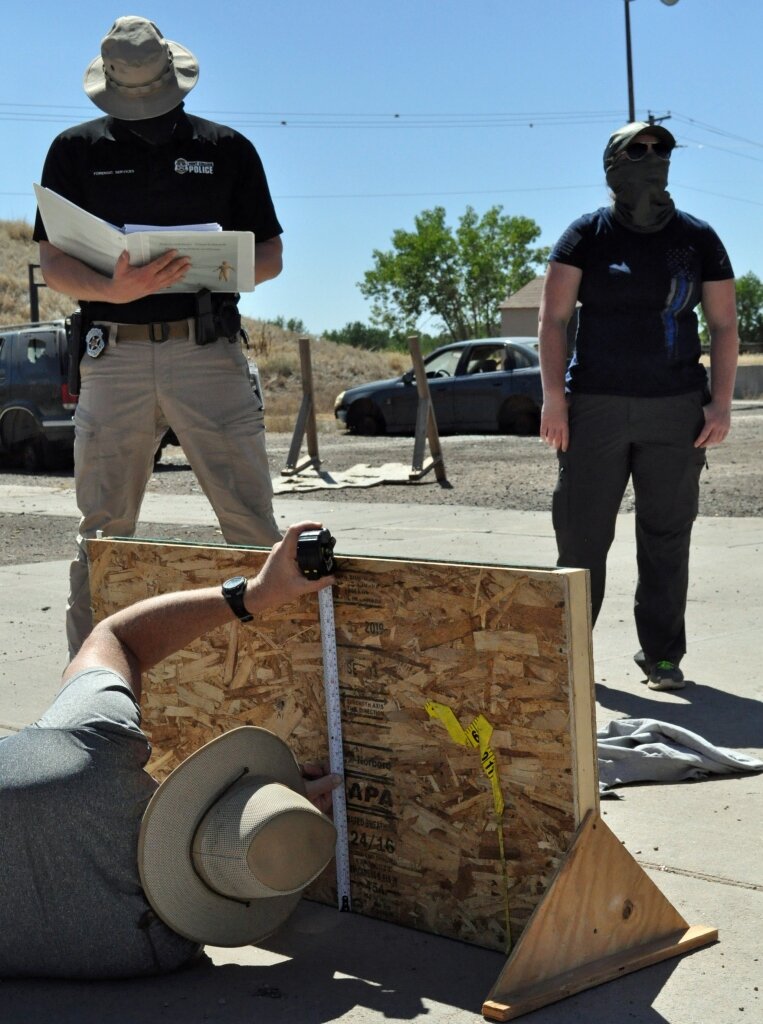Explore our 2024 forensic science education conference guide. Unlock opportunities to enhance your knowledge, connect with experts, and stay at the forefront of advancements in forensic education.
Read MoreBlog
Bevel Gardner & Associates forensic consulting and education providing instruction across the country and around the world. Located in Oklahoma, we are the largest independent forensic consulting company in the US. Follow our blog.
THE TEACHING OF GREAT-GRANDFATHER TUCKER LEADS TO AN UNUSUAL PROFESSION
By Tom Bevel
Part II - U. S. Army Infantry and OCPD
During my service in the infantry in Vietnam, I had numerous opportunities to witness bloodshed firsthand and understand its origins. I instinctively drew comparisons between what I observed and the teachings my Grandfather imparted during our deer hunting trips many years ago. Since Vietnam, my preference when in nature has shifted from wielding a rifle to capturing moments with a camera.
Following my Army tenure, I joined the Oklahoma City Police Department and eventually advanced to the role of Crime Scene Investigator after serving on patrol. This role exposed me to countless violent crime scenes marked with bloodstains. Although my training offered little guidance on interpreting these stains, it was evident that they held narratives, much like tracking a wounded deer, if one would only “listen.”
Driven by my interest and the accuracy of my preliminary observations, my supervisor arranged for me to attend a comprehensive forty-hour bloodstain interpretation class at the Orlando, FL., Medical Examiner’s Office. This experience ignited my passion for the discipline, leading me to delve deeper into the study, conduct experiments, and advocate for training programs benefiting Crime Scene Investigators, Medical Examiners and their field agents, Defense and Prosecuting Attorneys, and Forensic Scientists.
Drawing upon my Grandfather’s teachings, I coauthored four (4) textbooks on the subject. I played a pivotal role in establishing the International Association for Bloodstain Pattern Analysts, attracting members from numerous foreign countries. These textbooks have allowed me to lecture across the United States and eight foreign countries.
When we attentively listen to our elders’ teachings and embrace their wisdom, it is astounding how much knowledge can be acquired, passed down, and further enhanced through continued study and experimentation.
Thank you, Grandfather Tucker.
The Teaching of Great-Grandfather Tucker Leads to an Unusual Profession
By Tom Bevel
Part I - I was eight (8) years old when my Great Grandfather began taking me on horseback into the Ouachita Mountains adjacent to Talihina, OK. This area is part of the Native American Choctaw Nation in Leflore County, Oklahoma. While the free or open range was declared closed by the territorial legislature in 1895 in Oklahoma, my Granddad continued to pasture hogs and cattle in the mountains. He checked on them at least two times a month. Many fences now chop up this area; thus, the free grazing of stock animals is no longer possible.
During our trips Into the mountains, one of the common stops was to rest in the shade of a great oak tree. Near the tree, he showed me how to work an area near a rock outcrop that revealed a natural cold spring. Once it started flowing, we cupped our hands to wet our faces and drink the cold water. It was so refreshing; I always looked forward to this stop. I asked him how he knew where the spring was, and he said, "You learn from your elders and from paying attention to the land, as it speaks to you if you “ah, mah!” (listen) to it."
Around the same age, I started going with him on deer hunts, where again he mentioned “ah, mah!” when tracking a wounded deer. I came to learn his “listening” was analogous to “yaki”,(seeing) and “ahni”, (observing) all that is around you. He advised that if you don’t see blood but think you hit the deer, keep following the trail as the blood will build up over time and begin to be lost, creating a path to follow.
On one trip, after a deer was wounded and ran off, we followed the trail of blood. As we walked, he began to teach me what the different kinds of blood told him about the deer’s bleeding wound. In this case, the blood was frothy with bubbles, and he remarked that the deer was wounded in his lungs. He advised that bright red to pinkish blood could indicate a lung wound due to oxygen mixed with the blood. As we continued following the trail, he described other types of blood trails and what they would tell you. Very dark red blood can come from a liver wound. The green matter will likely be from an injury to the stomach, of which the deer has four. A narrow blood trail that goes to less blood and back to heavy blood may indicate a leg wound as the blood trail changes from leg movement. He also advised that when following the deer trail, look for blood on the surrounding brush, and if you find blood, it tells you about the type and location of the wounds to the animal and indicates the direction of travel. While my Great Grandfather has been deceased for many years, his teachings remind me to observe what is around me, listen to the story it tells, and try to understand what it tells us.
What Does One Do with a Bloodstained Pillowcase?
I imagine many, if not most, people in forensics and law enforcement have family who want to share some aspect of our careers....As professionals, we should be aware of the darker side of our occupation and the effect it has on us – mentally, emotionally, spiritually, physically – and taking action to address them.
Read More2023 Guide to Education Conferences
February 13-18, 2023
Orlando, Florida
February 27-March 2, 2023
Carolina Beach, North Carolina
August 6-11, 2023
Oklahoma City, Oklahoma
August 20-26, 2023
National Harbor, Maryland
August 28-September 1, 2023
Grapevine, Texas
October 1-4, 2023
Spring, Texas
October 9-13, 2023
Inner Harbor, Maryland
2022 in Review and Looking Forward to a New Year
2022 in Review and Looking Forward to a New Year
What a year it has been! Bevel Gardner & Associates has been busier than ever. Our experts have taught at 25 agencies across the country, with over 500 students.
Much of the summer was spent in Colorado, enjoying some cooler weather. Grif snapped this photo of Pikes Peak when he was in Trinidad, Colorado. We really had a great time. teaching a few new courses and meeting many new students.
Ross Gardner received recognition as a distinguish member of the International Association for Bloodstain Pattern Analysis. “Members who have rendered significant service to the discipline or the Association or have achieved special qualifications in the field of Bloodstain Pattern Analysis may be nominated for the Distinguished Member Award.”
In 2022, Cele Rossi joined our team of experts. Cele has a Master Peace Officer’s License with 22 years of law enforcement experience. Since her promotion to the crime laboratory in 2002, she has been court qualified as an expert in latent print examination, bloodstain pattern analysis, crime scene reconstruction and shooting incident reconstruction. Cele has been an exciting addition to BGA.
We also welcomed back Kim Duddy, retired Washington State Patrol Crime Laboratory, who has over 28 years of experience. She has expertise in crime scene reconstruction, bloodstain pattern analysis, and shooting incident reconstruction.
Ms. Duddy instructed numerous classes and workshops for law enforcement groups, medical examiners’ offices, and trial counsel groups on physical evidence recognition, documentation, and collection; crime scene processing; and bloodstain pattern analysis during her tenure with the WSPCLD. Ms. Duddy continues to instruct in bloodstain pattern analysis and crime scene reconstruction.
New to the BGA course line up!
Death Scene Investigation and Recovery of Human Remains. This course is designed for investigators, crime scene technicians, forensic technicians, medical examiners investigators, coroners and others involved in death scene examinations and medico-legal investigations of death. It provides the experienced detective or crime scene investigator with the skills necessary to thoroughly process and analyze a death scene. Students are taught to recognize and properly document the unique attributes of a death scene. Through a series of classes, laboratories and practical exercises, students will learn to interpret the dynamic relationship between the scene, evidence, and victim(s) injuries. Look for this course to be added to the calendar in 2023.
Speaking of 2023, our calendar has already begun to fill up. We are pleased to have several course offerings already scheduled at law enforcement agencies across the country. If your agency is interested in hosting a course, contact Craig Gravel (405) 706-8489 or rcgravel@bevelgardner.com.
Bevel Gardner & Associates 2023 Training Calendar
Bloodstain Pattern Analysis I Denton, TX Jan 9, 2023 – Jan 13, 2023 8:00 AM
Bloodstain Pattern Analysis I Seymore, IN Feb 6, 2023 – Feb 10, 2023 8:00 AM
Crime Scene Processing and Investigations I Idaho Falls, ID Feb 27, 2023 – Mar 3, 2023 8:00 AM
Shooting Incident Reconstruction Roswell, NM. Mar 13, 2023 – Mar 17, 2023 8:00 AM
Crime Scene Reconstruction II Salt Lake City, UT. Mar 20, 2023 – Mar 24, 2023 8:00 AM
Bloodstain Pattern Analysis I Bellingham, WA. Apr 3, 2023 – Apr 7, 2023 8:00 AM
Bloodstain Pattern Analysis I San Angelo, TX. Apr 17, 2023 – Apr 21, 2023 8:00 AM
Shooting Incident Reconstruction Salt Lake City, UT Jun 12, 2023 – Jun 16, 2023 8:00 AM
Bloodstain Pattern Analysis II Washington, IN. Jun 26, 2023 – Jun 30, 2023 8:00 AM
Bloodstain Pattern Analysis I Colorado Springs Jul 17, 2023 – Jul 21, 2023 8:00 AM
Shooting Incident Reconstruction San Angelo, TX. Sep 11, 2023 – Sep 15, 2023 8:00 AM
Follow us on social media:
Bevel Gardner & Associates: A Summer in Colorado
What a busy year it has been! Bevel Gardner & Associates has completed eighteen courses to date for 2022, with over 300 students participating. We have ten more courses scheduled for 2022 and have already started to fill the calendar for 2023. All our upcoming courses can be found here.
This summer, BGA escaped the heat and spent much of the time in Colorado teaching Bloodstain Pattern Analysis I & II, Crime Scene Reconstruction I, and Interview & Interrogation. The feedback from our students has been tremendous; four out of four stars!
Thank you to the agencies who hosted, especially the Colorado Springs Police Department, which hosted four of the courses this summer. We could not provide the services we do without the assistance of law enforcement agencies. If your agency is interested in hosting a course, please contact Craig Gravel at (405) 706-8489 or rcgravel@bevelgardner.com.





Host a Course with BGA
We are already adding courses to our 2023 training calendar.
Is your agency interested in hosting a course?
Here’s how:
To host a BGA course, the hosting agency must agree to market and coordinate registration in order to meet minimum class size of 14 paying students. For their effort the hosting agency receives as compensation, the following:
If the hosting agency achieves the 14 paying-student minimum, the hosting agency will receive one free tuition.
If the hosting agency achieves 18 -paying-students, the hosting agency will receive a total of two free tuitions.
If the hosting agency achieves 21 paying-students, the hosting agency will receive a total of three free tuitions.
Interested in hosting
a BGA course?
Contact Craig Gravel for more information: 405 706-8489
The hosting agency must:
Provide an adequate training facility to house twenty-four students, with moveable chairs and tables.
Provide additional space for the set up of scenarios (depending upon the class).
The training area must have available electrical outlets, extension cords, a screen or an appropriate projection wall.
Provide access to a copier for occasional handouts as required. Manuals and primary handouts are the responsibility of BGA, but as the class proceeds there are always minimal additional copying requirements.
Assist BGA in locating adequate room and board; however BGA is responsible for all associated travel and boarding costs for instructors.
Provide a shipping address, and be willing to accept deliveries in advance of the class, holding all supplies until required for class.
*The hosting agency is allowed to charge a small additional fee for refreshments if they desire.
Crime Scene Processing in Trinidad, Colorado
Crime Scene Processing in Trinidad, CO and Upcoming Courses for spring 2022
Read MoreBGA in the News: BPAI
Bevel Gardner & Associates’ BPA I Course, hosted by the Richland, WA Police Department, made the news last month. Tom “Grif” Griffin and Kim Duddy lead the course, and participants came from as far as Hawaii.
Richland Police Get 'Dexter' Style Training
“Back in the days of the old west, suspected murderers were dealt with swiftly, and with a minimum of evidence. A dead body and a likely suspect were pretty much all that was necessary.
These days, you can't just round up a posse and jump on the trail after the bad guys. Besides, murderers in large populations don't usually leave an obvious trail.
In recent years, shows like Forensic Files and CSI have shown how the smallest fiber or the tiniest blood drop can point investigators in the right direction and end up solving near-impossible cases. The perfect murder is becoming a thing of the past.
In the TV series Dexter, blood spatter analysis came to the forefront for everybody's favorite serial killer (he only killed bad guys...mostly), not always in solving crimes, but in making sure you don't get caught.
Richland Police recently went through some very cool blood spatter training. This is important even for first responders so they don't contaminate a blood-stained scene as well as for those who will spend hours investigating and documenting the splatter patterns. A crime scene can often be completely recreated just by accurately analyzing every detail of blood spatter.” ~ newstalk870.am
Bloodstain Pattern Analysis I teaches an investigator how to examine blood patterns found in a scene or on items recovered from the scene of a crime. This basic level I course introduces the student to bloodstain pattern analysis with significant concentration on basic pattern recognition and documentation. The student must pass a post-course test that concentrates on pattern recognition, directionality, and impact angle calculations with a score of 80% prior to advancing to the next level course.
The BGA Bloodstain Pattern Analyst Professional Development Program (BPAPD) is a cradle to grave program consisting of four parts. We feel it represents the most comprehensive study plan for BPA analysts offered in the United States. Bevel Gardner & Associates offers training in all levels of study.
If your agency is interested in hosting a course, contact Craig Gravel for more information: 405 706-8489.
New Year, New Training - Bevel, Gardner & Associates Expert Training Courses
The BPAPD program incorporates three distinct training courses of one week each. A Level I course introduces the student to bloodstain pattern analysis with significant concentration on basic pattern recognition and documentation. This Level II course concentrates on proper application of scientific method, experimental design and clothing examinations. Between the Level II and Level III course the student participates in a mentorship program. The mentoring program includes requirements for both case analysis and research design/completion. The Level III course includes a pre-course case analysis and then on-site course concentration on experimental design, and court room presentations.
Objectives:
Demonstrate the ability to use and apply scientific method.
Demonstrate the ability to apply experimental design in support of bloodstain pattern analysis.
Demonstrate the ability to evaluate bloodstain patterns on clothing.
Recognize and demonstrate how Luminol and LCV are used to enhance latent blood patterns.
Demonstrate the ability to evaluate a complex bloodstain pattern scene.
Demonstrate the ability to present bloodstain pattern analysis conclusions in a logical written format.
The course is intended to develop a fundamental knowledge of crime scene processing technique. The course will illustrate to the student the six basic activities of crime scene processing and the sequence of those activities. The course concentrates on these core concepts: assessing, observing, documenting, searching and collecting, but also includes lectures on advanced techniques such as alternate light source utilization, bloodstain pattern recognition and trajectory analysis. It will introduce the student to the function and role of crime scene analysis.
Objectives:
Demonstrate knowledge of the six basic activities involved in crime scene processing and the general order of these activities.
Recognize the general categories of physical evidence, what a crime laboratory can do with this evidence and accepted methods of recovery.
Demonstrate knowledge of the critical aspects of assessing a crime scene, including scene containment, crime scene team composition considerations, choosing the most effective crime scene search technique and scene hazard identification and mitigation.
Describe the different scene mapping methods.
Describe the three basic photographs utilized for crime scene documentation.
Describe and demonstrate the basic elements of crime scene narratives.
Recognize basic bloodstain patterns.
Discuss the function, theory and application of an alternative light source in crime scene processing.
Recognize the affect of effective crime scene documentation on crime scene analysis.
Describe basic methodologies of crime scene analysis.
Craig Gravel - Instructor at University of Central Oklahoma Forensic Institute
“The University of Central Oklahoma (UCO) W. Roger Webb Forensic Science Institute is home to the largest and one of the most sought-after forensic science education programs in the country. In fact, UCO is ranked as the top institution for forensic science in the nation and is the only higher education institution in the state recognized on the list. The ranking is based on Central’s state-of-the-art facilities, partnerships and career placement opportunities, as well as key factors like accessibility and affordability, internship and research opportunities, faculty expertise and extracurricular opportunities.”
For more information about this program, UCO FORENSIC SCIENCE INSTITUTE.
Read the complete article here. Oklahoma City Innovation District.
BGA Course Offerings for Fall 2021
Crime Scene Reconstruction I hosted by the Wheat Ridge Police Department
Oct 4, 2021 – Oct 8, 2021 - Wheat Ridge, Colorado
Instructors: Jonathyn Priest & Tom "Grif" Griffin
The examination of crime scenes using a methodical approach, in an attempt to capture as much physical evidence, in as pristine and usable condition as possible. The techniques described in this class are recognized by an international organization of crime scene investigators and forensic scientists to be a standard approach to crime scene investigation.
A course of instruction designed for investigators, crime scene technicians, forensic technicians, and others involved in criminal and medical-legal investigations and crime scene analysis. The course is intended to develop a fundamental knowledge of appropriate hypothesis development and testing procedures and provide an objective form of defining the events associated with a complex crime (Event Analysis). The course syllabus is not intended to create an “instant” expert. This course is not a crime scene processing course.
Objectives:
Demonstrate knowledge of the development, history and advancement of crime scene analysis.
Identify the steps of scientific method.
Identify the seven steps of the methodology used in crime scene analysis.
Demonstrate the ability to develop a hypothesis in a written format and set an objective foundation for any ultimate conclusion.
Demonstrate the ability to objectively flow chart an incident, distinguishing relative chronology from absolute chronology.
Demonstrate an ability to evaluate a complex crime scene.
Death Investigation Training Seminar hosted by the Loveland Police Department
Oct 11, 2021 – Oct 14, 2021 - Loveland, Colorado
Instructor: Jonathyn Priest
This course of instruction is designed for investigators, crime scene technicians, forensic technicians, medical examiners investigator’s, coroner’s and others involved in death scene examinations and medico-legal investigations of death. The course is intended to develop the knowledge, procedures and techniques employed in documenting and processing death scenes. This includes searching for and recovering human remains.
This course provides the experienced detective or crime scene investigator with the skills necessary to thoroughly process and analyze a death scene. This course focuses on the procedures, practices and methodologies performed at the death scene to ensure the scene is appropriately documented and processed. The relationship of evidence in context to determine investigative direction and develop investigative leads is emphasized.
Students are taught to recognize and properly document the unique attributes of a death scene. Through a series of classes, laboratories and practical exercises, students will learn to interpret the dynamic relationship between the scene, evidence, and victim(s) injuries.
Practical Crime Scene Processing and Investigation hosted by the Mesa County Sheriff's Office
Nov 1, 2021 – Nov 5, 2021 - Grand Junction, Colorado
Instructors: Ross M. Gardner & Tom “Grif” Griffin
The evaluation of physical evidence and its context in a scene in an attempt to define objective actions that occurred during an incident. Event analysis is recognized as one of the most effective techniques for modern crime scene analysis, and is taught thoroughly in these classes.
The course is intended to develop a fundamental knowledge of crime scene processing technique. The course will illustrate to the student the six basic activities of crime scene processing and the sequence of those activities. The course concentrates on these core concepts: assessing, observing, documenting, searching and collecting, but also includes lectures on advanced techniques such as alternate light source utilization, bloodstain pattern recognition and trajectory analysis. It will introduce the student to the function and role of crime scene analysis.
Objectives:
Demonstrate knowledge of the six basic activities involved in crime scene processing and the general order of these activities.
Recognize the general categories of physical evidence, what a crime laboratory can do with this evidence and accepted methods of recovery.
Demonstrate knowledge of the critical aspects of assessing a crime scene, including scene containment, crime scene team composition considerations, choosing the most effective crime scene search technique and scene hazard identification and mitigation.
Describe the different scene mapping methods.
Describe the three basic photographs utilized for crime scene documentation.
Describe and demonstrate the basic elements of crime scene narratives.
Recognize basic bloodstain patterns.
Discuss the function, theory and application of an alternative light source in crime scene processing.
Recognize the affect of effective crime scene documentation on crime scene analysis.
Describe basic methodologies of crime scene analysis.
To host a BGA course, the hosting agency must agree to market and coordinate registration in order to meet minimum class size of 14 paying students. For their effort the hosting agency receives as compensation, the following:
If the hosting agency achieves the 14 paying-student minimum, the hosting agency will receive one free tuition.
If the hosting agency achieves 18 -paying-students, the hosting agency will receive a total of two free tuitions.
If the hosting agency achieves 21 paying-students, the hosting agency will receive a total of three free tuitions.
The hosting agency must:
Provide an adequate training facility to house twenty-four students, with moveable chairs and tables.
Provide additional space for the set up of scenarios (depending upon the class).
The training area must have available electrical outlets, extension cords, a screen or an appropriate projection wall.
Provide access to a copier for occasional handouts as required. Manuals and primary handouts are the responsibility of BGA, but as the class proceeds there are always minimal additional copying requirements.
Assist BGA in locating adequate room and board; however BGA is responsible for all associated travel and boarding costs for instructors.
Provide a shipping address, and be willing to accept deliveries in advance of the class, holding all supplies until required for class.
*The hosting agency is allowed to charge a small additional fee for refreshments if they desire.
Interested in hosting a BGA course?
Contact Craig Gravel for more information: 405 706-8489
We Are Returning to the Classroom This Spring.
Due to the pandemic, the last year has been full of uncertainty, loss, and disappointment. However, many have been able to find joy in the little things. Did you find a new hobby? Perhaps you reconnected with an old friend or discovered your love for the outdoors. No matter how you spent your time, most of us can agree our lives will never look the same as it did prior to 2020. Do not let it be discouraging. We will recover, and Spring is the perfect time to embrace hope about what is on the horizon.
“Spring will come and so will happiness. Hold on. Life will get warmer.”
~ Anita Krizzan
We are looking forward to getting back to the classroom in 2021. The calendar is filling up with several course options hosted at a variety of locations across the country. Bevel, Gardner and Associates has embraced the “new normal”, so space in each course will be limited. Register early!

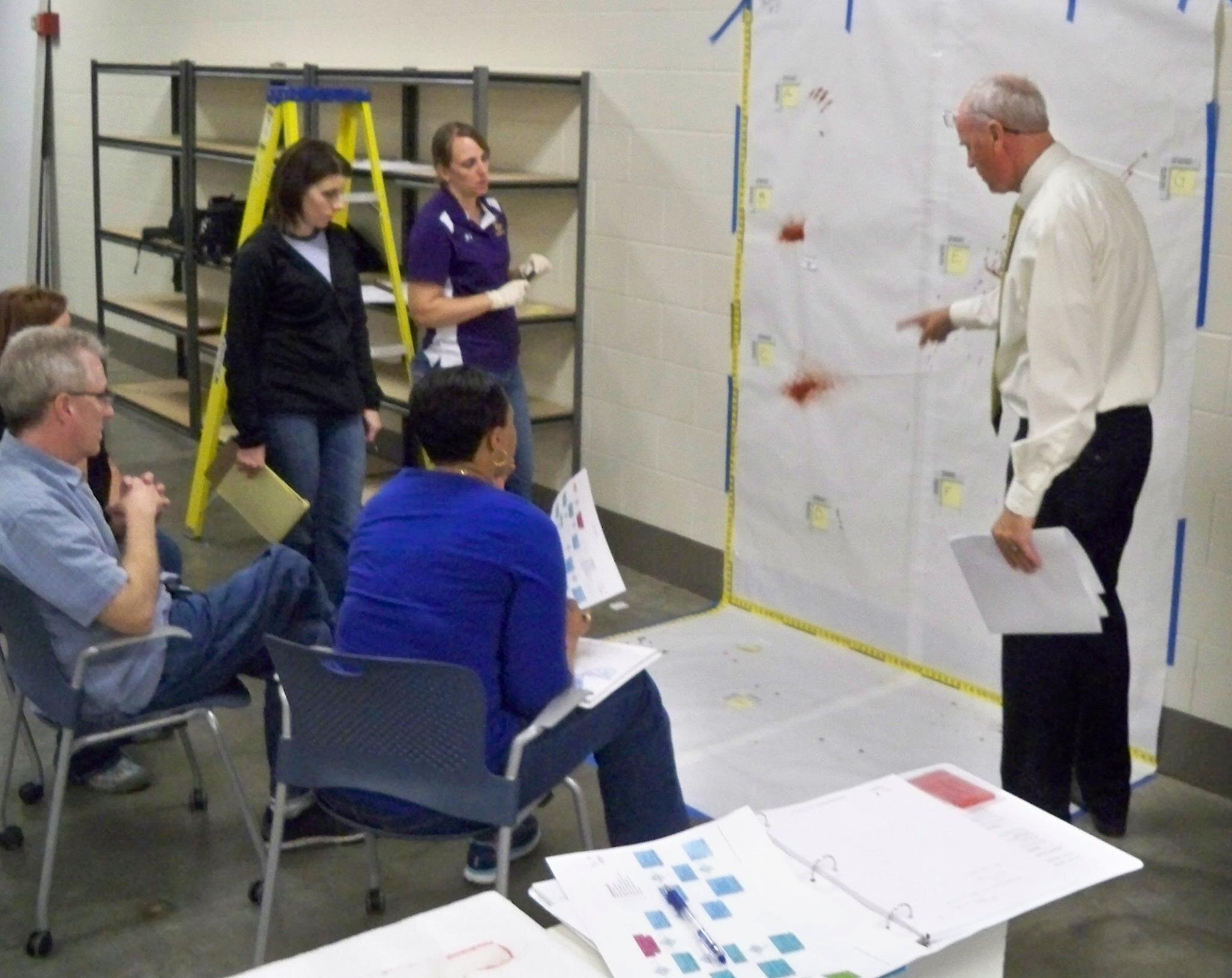
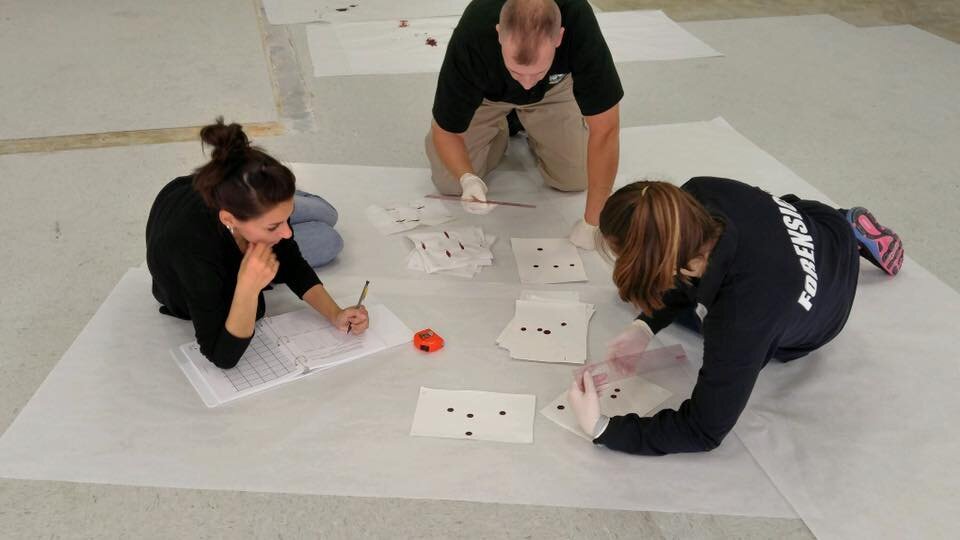
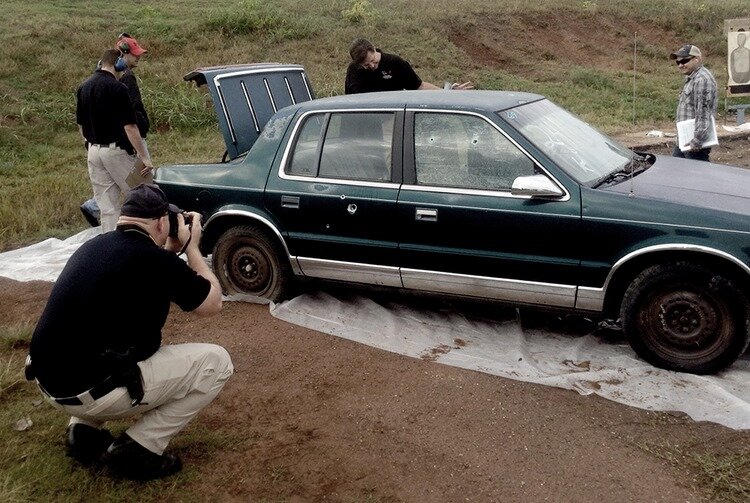
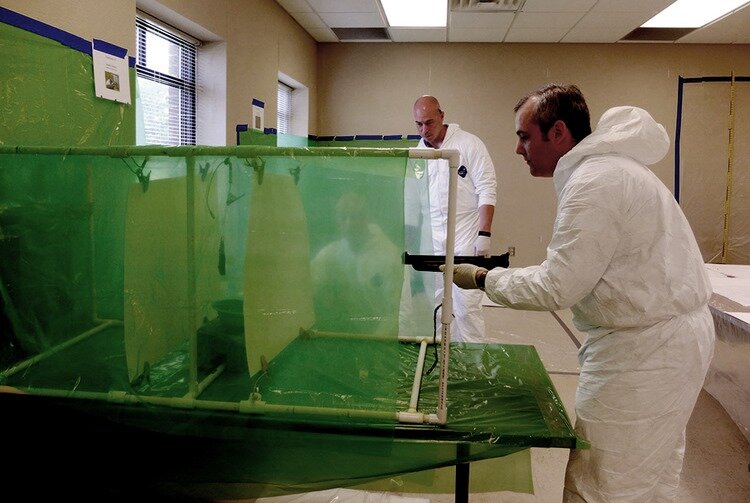
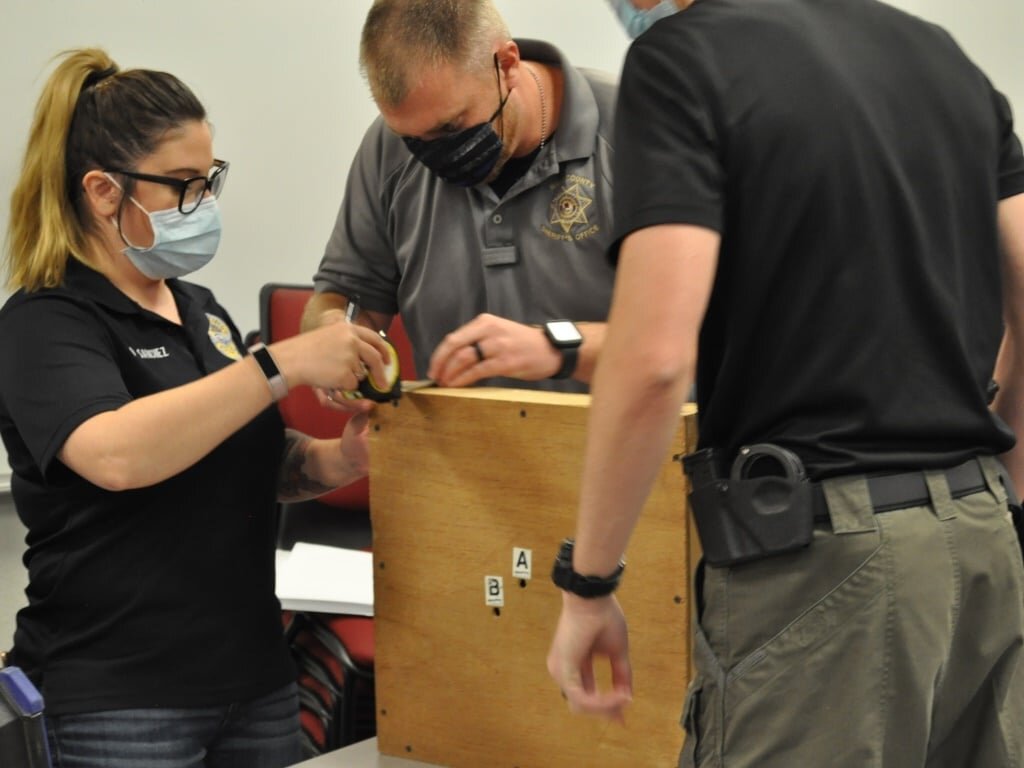
Jul 26, 2021 – Jul 30, 2021 – Colorado Springs Police Department, Colorado Springs, CO
May 17, 2021 – May 21, 2021 – Denton Police Department, Denton, TX
Jun 7, 2021 – Jun 11, 2021 – Weld County Sheriff’s Office, Greeley, CO
Jun 21, 2021 – Jun 25, 2021 – Colorado Springs Police Department, Colorado Springs, CO
Bloodstain Pattern Analysis II
May 24, 2021 – May 28, 2021 - Bonneville County Sheriff’s Office, Idaho Falls, ID
Bloodstain Pattern Analysis Fabrics Course
Sep 20, 2021 – Sep 23, 2021 – Lakewood Police Department, Lakewood, CO
Death Investigation Training Seminar
Oct 11, 2021 – Oct 14, 2021 – Loveland Police Department, Loveland, CO
Is your agency interested in hosting a course? Visit our website to find out more information about requirements and compensation for hosting. HOW TO HOST A COURSE
“Buried in the Backyard” - Craig Gravel Appears on The Oxygen Channel
December 7, 1990 seemed like an ordinary day for Janet Dennis, a divorced mother of three. However, she failed to show at her son’s wrestling tournament with no explanation, which was unlike her. She never missed a school event. When her children returned to their home, Janet, her car, and her purse were missing. When she had not returned by nightfall, her ex-husband, Lenny, contacted the Oklahoma City Police Department.
When Monday came, and Janet had not returned home, the police department began to look closely at Leroy. They traveled to his home to interview him. Leroy claimed to have been on good terms with his ex-wife. He also insisted he was on his farm at the time of Janet’s disappearance, and his mother confirmed his alibi. The police searched Janet’s home and found no evidence of foul play. It was almost as if she had simply left. However, her father knew she would never leave her children. Something was not right.
Two months after Janet disappeared, Leroy’s neighbors contacted police with a bombshell claim. They remembered seeing fires on Leroy’s property at the time of Janet’s disappearance. Craig Gravel, who led the investigation on the case said, “this was huge”. The new information would lead investigators to put together the pieces of Janet’s disappearance.
“Leroy Dennis allegedly told his children the bones they were playing with belonged to a possum, but they actually belonged to their mother...”
To find out how this case was solved, watch Craig Gravel’s interview in Season 3, Episode 14 of “Buried in the Backyard” on Oxygen Channel.
A Look Inside Our Recent Bloodstain Pattern Analysis Course, Billings, Montana
In mid-October, the Billings Police Department hosted BGA’s Bloodstain Pattern Analysis I with instructor, Tom "Grif" Griffin, BA, CSCSA, CBPA. KURL-8 News was there to feature the class labs and objectives, in addition to interviews with law enforcement students.
"There are some cases where it is crucial, in terms of how stains came to be on a garment for example, or the nature of a pattern that says we have an impact and it occurred in this general area that may support or refute what someone is saying. It's been key in some cases that way," says Griffin.
Our students’ feedback is helpful when designing our classes. We want to provide the highest quality education for both novice and intermediate investigators.
“The labs were good to get experience and see stain patterns.”
“The labs and practicals were fantastic.”
“The course was beneficial for investigators to have the knowledge which may help them determine a scene is consistent with what was reported as to what happened.”
“This course will help me understand the scene to help recreate the events.”
“I enjoyed the course and learned a lot. The labs made the course enjoyable and how to apply what we learned. The course was very helpful moving forward in investigations at scenes to have good basic knowledge what looking at regarding bloodstains.”
“I thought the various blood patterns were very interesting and how directionality can be determined as well as area of origin in impact patterns/stains. It was most helpful having a scenario and doing the tangent method as well as doing the stringing method.”
“The course is a crucial part of death investigation, especially integrated with shooting reconstruction.”
“The course was very informative. I look forward to the next classes.”
It’s important for law enforcement investigators to maintain training regarding forensics and crime scene investigation. Bevel, Gardner and Associates’ experts offer several courses to keep your agency educated. For more information about our experts, class offerings, and the course calendar, visit our website.
Bloodstain Pattern Analysis II - Lakewood, CO
Last month, Bevel Gardner & Associates and the Lakewood Colorado Police Department hosted Bloodstain Pattern Analysis II. This 40-hour course properly trains competent bloodstain pattern analysts by enhancing basic skills and developing the novice to a core competency level required for independent analysis.
In the recent past, questions have been raised with regard to the technical training analysts receive, particularly within the United States. The BGA Bloodstain Pattern Analyst Professional Development Program (BPAPD) is intended to better meet the needs of both the student and the discipline. The BPAPD program incorporates three distinct training courses of one week each. A Level I course introduces the student to bloodstain pattern analysis, with significant concentration on basic pattern recognition and documentation. The Level II course concentrates on proper application of scientific method, experimental design and clothing examinations. Between the Level II and Level III course the student participates in a mentorship program. The mentoring program includes requirements for both case analysis and research design/completion. The Level III course includes a pre-course case analysis and then on-site course concentration on experimental design, and court room presentations.
Here are a few comments from the analysts who participated in this BPA II course:
Would you recommend this course?
This course provides “invaluable insight for bringing meaning to bloody scenes.”
“Hands on learning, very comprehensive, great instructor.”
“Good follow-up to build on concepts from BPA I.”
“The course is helpful and lends explanations of patterns/bloodstains in context to the scene.”
“Great class. I really enjoyed the time and I learned a lot. It also refreshed my BPA knowledge, thanks.”
For more information on this courses and other available courses , please visit our website https://www.bevelgardner.com/training.
SHOOTING INCIDENT RECONSTRUCTION AT THE GREELEY, CO POLICE DEPARTMENT
The purpose of Forensic Science is to examine and collect information to help determine the facts at the scene of the crime. It may be used to confirm or exclude a suspect from further investigation. Bevel Gardner and Associates’ experts teach the proper analysis techniques preparing for presentation in a court of law. Typically our courses are hosted by police departments nationwide. If your agency is interested in hosting a course, please contact us.
The specific courses we offer are: Crime Scene Reconstruction, Crime Scene Processing, Shooting Incident Reconstruction, Officer Involved Shootings, and Bloodstain Pattern Analysis
Earlier this month, Tom "Grif" Griffin and Jonathyn Priest taught Shooting Incident Reconstruction at the Greeley, Colorado Police Department. Our classes look a little different these days. Students’ and Instructors’ temperatures are taken before each class, and everyone wears masks. One day we used the infrared thermometer to determine the temperature of the pavement outside. It was 113 degrees! Definitely a hot September day in Colorado.
Shooting Incident Reconstruction provides the experienced detective or crime scene investigator with the skills necessary to analyze and reconstruct shooting incidents. Students are taught to recognize and properly document the unique attributes of a shooting scene. Through a series of classes, laboratories and practical exercises, students will learn to interpret the dynamic relationship between the scene, evidence, and victim(s) injuries.
The methodology and techniques needed to properly analyze and reconstruct the scene are emphasized. Students will be able to apply these skills to determine position of shooter(s), victim(s), and critical evidence, and to determine sequence of events.
Course Objectives are:
Firearms & Ammunition Design and Nomenclature
Projectile Trajectories and Bullet Stability
Wound Dynamics
Computation of Projectile Trajectories
Unusual Surfaces and Ricochet Laboratory
The Scientific Method
Scientific Method as it Applies to Experimental Design
Reconstruction Analysis Methodology
Original Experimentation Laboratory
Shooting Incident Reconstruction Practical Exercise
Meet Our Experts
Bevel, Gardner and Associates Inc. (BGA) affiliates are available to review forensic evidence and are internationally qualified to provide testimony in their respected fields. BGA offers world class consulting expertise in the areas of Bloodstain Pattern Analysis, Crime Scene Reconstruction, Shooting Incident Reconstruction, Officer Involved Shootings, Computer Animation and Total Station 360˚ Scene Mapping. Bevel, Gardner and Associates Inc. offers their expertise analysis in both criminal and civil matters. The analysis includes a review of the physical evidence, crime scene documentation and other associated reports. Bevel, Gardener and Associates have gathered a team of top experts you can contact at one central location. Our team of experts is located from the East to the West Coast of the United States. Bevel Garner and Associates have gone through extensive testing to become qualified as experts in their fields in International Courts.
This group of highly trained professionals bring together an accumulated 310 years of practical investigative and forensic analysis experience. Both independently and together, this group has authored five books, two chapters as invited authors and numerous technical articles.
When a team member is hired to do a case analysis, a written Event Analysis report is created; completed; constructed that is cross-referenced to the case documentation. The analyst's conclusions in the report are always peer reviewed by another qualified Bevel, Gardner and Associates analyst before the report is released.













